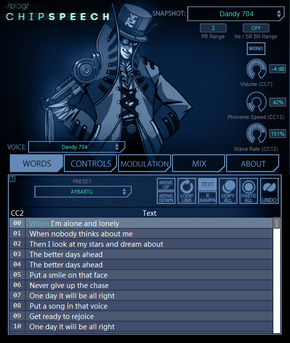
A vocoder is a category of speech coding that analyzes and synthesizes the human voice signal for audio data compression, multiplexing, voice encryption or voice transformation.
Speech synthesis is the artificial production of human speech. A computer system used for this purpose is called a speech synthesizer, and can be implemented in software or hardware products. A text-to-speech (TTS) system converts normal language text into speech; other systems render symbolic linguistic representations like phonetic transcriptions into speech. The reverse process is speech recognition.

The TI-99/4 and TI-99/4A are home computers released by Texas Instruments in 1979 and 1981, respectively. The TI-99 series competed against home computers such as the Apple II, TRS-80, Atari 400/800, and VIC-20.
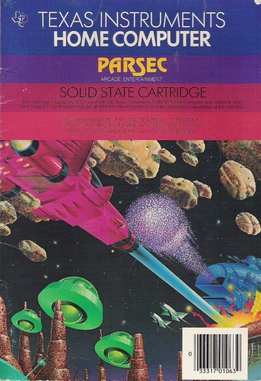
Parsec is a horizontally scrolling shooter written by Jim Dramis and Paul Urbanus for the TI-99/4A and published by Texas Instruments in 1982. Dramis also programmed Car Wars and Munch Man for the TI-99/4A.

Votrax International, Inc., or just Votrax, was a speech synthesis company located in the Detroit, Michigan area from 1971 to 1996. It began as a division of Federal Screw Works from 1971 to 1973. In 1974, it was given the Votrax name and moved to Troy, Michigan and, in 1980, split off of its parent company entirely and became Votrax International, Inc., which produced speech products up until 1984.
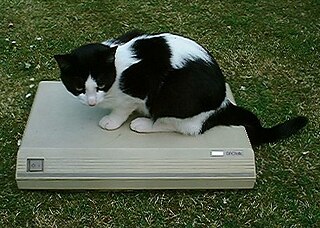
DECtalk was a speech synthesizer and text-to-speech technology developed by Digital Equipment Corporation in 1983, based largely on the work of Dennis Klatt at MIT, whose source-filter algorithm was variously known as KlattTalk or MITalk.

ESS Technology Incorporated is a private manufacturer of computer multimedia products, Audio DACs and ADCs based in Fremont, California with R&D centers in Kelowna, BC, Canada and Beijing, China. It was founded by Forrest Mozer in 1983. Robert L. Blair is the CEO and President of the company.

eSpeak is a free and open-source, cross-platform, compact, software speech synthesizer. It uses a formant synthesis method, providing many languages in a relatively small file size. eSpeakNG is a continuation of the original developer's project with more feedback from native speakers.
Homer W. Dudley was an American pioneering electronic and acoustic engineer who created the first electronic voice synthesizer for Bell Labs in the 1930s and led the development of a method of sending secure voice transmissions during World War Two. His awards include the Franklin Institute's Stuart Ballantine Medal (1965).
Forrest S. Mozer is an American experimental physicist, inventor, and entrepreneur known best for his pioneering work on electric field measurements in space plasma and for development of solid state electronic speech synthesizers and speech recognizers.
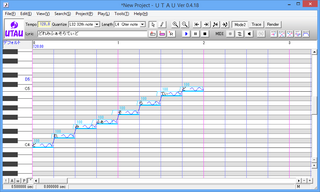
UTAU is a Japanese singing synthesizer application created by Ameya/Ayame (飴屋/菖蒲). This program is similar to the VOCALOID software, with the difference being it is shareware instead of under a third party licensing.

Voiceroid is a speech synthesizer application developed by AH-Software and is designed for speech. It is only available in the Japanese language. Its name comes from the singing software Vocaloid, for which AH-Software also develops voicebanks. Both AH-Software's first Vocaloids and Voiceroids went on sale on December 4, 2009.

GI SP0256 refers to a family of closely related NMOS LSI chips manufactured by General Instrument in the early 1980s, able to model the human vocal tract by a software programmable digital filter, creating a digital output converted into an analog signal through an external low-pass filter. The SP0256 includes 2 KB of mask ROM. The various versions of SP0256 differ primarily in the voice data programmed into their mask ROMs.
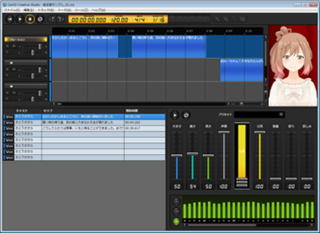
CeVIO is the collective name of a range of computer software projects, including Vision and Creative Studio. CeVIO was made to assist in the creation of user-generated content. It works via text-to-speech method.

Vocaloid 2 is a singing voice synthesizer and the successor to the Vocaloid voice synthesizer application by Yamaha. Unlike the first engine, Vocaloid 2 based its output on vocal samples, rather than voice analysis. The synthesis engine and the user interface were completely revamped, with Japanese Vocaloids possessing a Japanese interface, as opposed to the previous version, which used English for both versions. It is noteworthy for introducing the popular character Hatsune Miku. It was succeeded by Vocaloid 3.

Vocaloid 3 is a singing voice synthesizer and successor to Vocaloid 2 in the Vocaloid series. This version of the software is a much more expansive version, containing many new features, three new languages and many more vocals than past software versions combined. It was succeeded by Vocaloid 4.
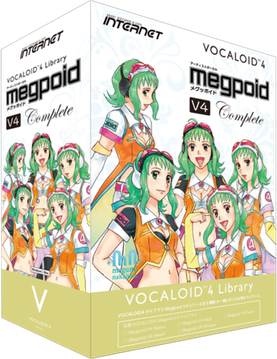
Megpoid is a Vocaloid by Internet Co., Ltd. Her voice is sampled by Megumi Nakajima. The mascot of the software is called Gumi . She is also sometimes called Megpoid GUMI, or GUMI Megpoid.
Plogue Art et Technologie, Inc. is an incorporated company based in Montreal, Quebec, Canada that develops music software including Bidule, chipsounds, Alter/Ego and chipspeech.

Alter/Ego (アルター・エゴ) is a free real-time vocal synthesizer software which was created by Plogue.

Dennis H. Klatt was an American researcher in speech and hearing science. Klatt was the pioneer of computerized speech synthesis and created an interface which allowed for speech for non-expert users for the first time. Prior to his work, non-verbal individuals would need specialist support to be able to speak at all. Stephen Hawking used a version of this speech synthesizer, based on Klatt's own voice, and which Hawking chose to keep even after others became available.
